10 of Australia’s greatest ever Test victories away from home, from Nagpur to Newlands and beyond
Winning on the road in any sport is tough. In cricket the odds are stacked even more heavily against the away side. So a victory on foreign soil is one to be savoured. Here are 10 of Australia’s very best.
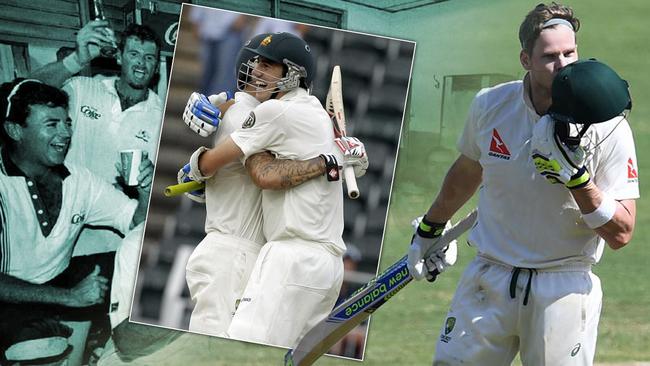
Cricket
Don't miss out on the headlines from Cricket. Followed categories will be added to My News.
- If the show goes on without fans will it keep Kohli quiet?
- COVID subs allowed, Saliva banned as ICC rewrites laws
In few, if any, sports is the home ground advantage so pronounced as it is in cricket. Winning on the road is hard. Draws feel like victories. Wins all the sweeter for the defying the conditions.
It is 31 years ago this week that ‘the worst Australian team ever to tour the UK’ began a six match Ashes series in which only the English weather spared the hosts from worse than a 4-0 beating.
Relive the ICC Cricket World Cup 2019 on KAYO. Watch complete and condensed replays of the biggest matches. New to Kayo? Get your free trial now & start streaming instantly >
That unheralded team contained greats in the making, with Mark Taylor, Steve Waugh and Merv Hughes returning home to heroes’ welcomes.
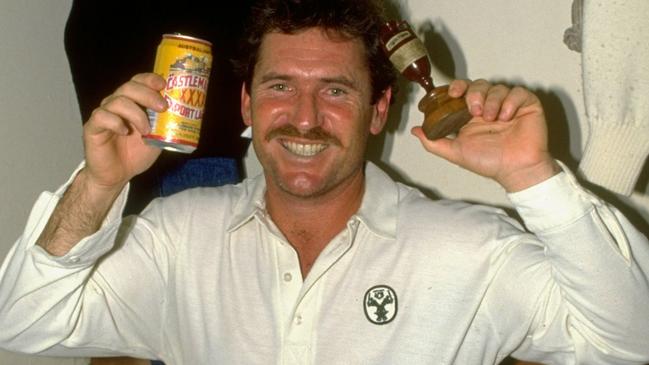
Taylor chalked up 839 runs for the series and Waugh averaged north of 125, confirming his place at the very summit of the game’s contemporary batsmen.
With the ball, Geoff Lawson was at his reliable, consistent best, while Terry Alderman had a series to savour, the pair along with Hughes accounting for 89 of the 105 wickets that fell.
The opening contest of that series remains one of the sweetest away wins. Though there have been many more besides …
1st Test v England, (Headingley, 1989)
Australia won by 210 runs
Australia had lost the two previous Ashes series, home and away, and not won a series on the road since their last loss in England. But in this match it laid down a marker for what in hindsight was the beginning of a two decade long era of dominance.
Alderman had been almost written off as a 30 something with his best behind him, injury having dulled his potency. His 10 for 151 - split evenly across the two innings - put the lie to that belief, his mastery of swing bowling in English conditions too much for the hosts to repel.
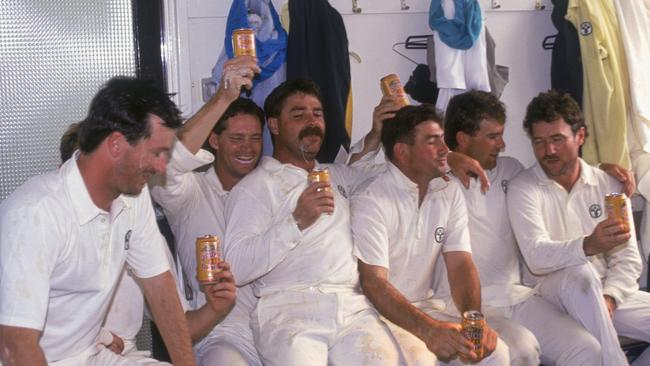
Steve Waugh’s unbeaten 177 in a first innings total of 7-601d was his first Test ton, with Mark Taylor also going past three figures, a devastating combination the English would become well accustomed to watching. The underdogs were anything but.
As well as the talent in the Australian side asserting itself, with Ian Healy, too, to the fore, the change in mindset was obvious. Border had instructed his team to cut out the familiarity and friendliness with the opposition. A blueprint for future success.
The philosophy was perhaps best demonstrated by Alderman, handed the man of the match award narrowly ahead of Waugh and Taylor. Presented with a bottle of bubbly for his efforts, he declined to open it, saying he would only do so once the series had been won.
He didn’t have long to wait.
2nd Test v South Africa (The Wanderers, 2011)
Australia win by two wickets
After Australia had been soundly beaten in the first Test of the series, a trip to The Wanderers probably felt like a form of cruel punishment. As hostile a ground as can be found in world cricket, many have crumbled under the intimidation of the place.
But not a fresh faced 18-year-old by the name of Pat Cummins. Against a fine South African side, Cummins put in a display of fierce, relentless pace bowling that made the world take notice.
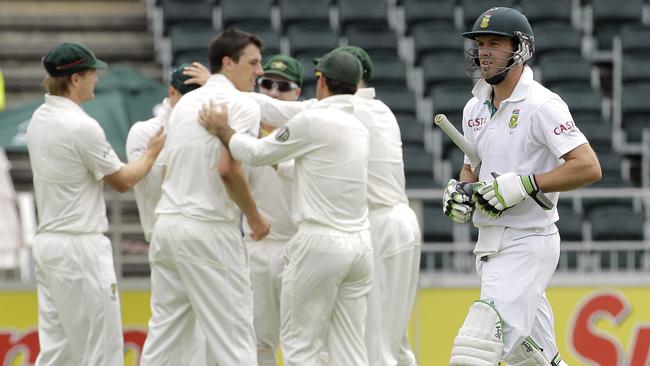
Hashim Amla became his first Test victim in the first inning, during which an even contest slowly revealed itself between bat and ball. But it was during the Proteas’ second knock that he really let fly.
Jacques Rudolph, Jacques Kallis and AB de Villiers were powerless to resist him; Vernon Philander, Dale Steyn and Morne Morkel were given a visceral introduction to the latest entry to the ranks of world class pace bowlers they helped make up.
Pace and movement and hardly a bad ball in there, Cummins’ 6-79 kept Australia in the match as the tourists were set 310 to win, off the back of a century knock from Amla. Then he even finished the job himself, there in a ninth wicket partnership with Mitchell Johnson to score the winnings runs.
As suddenly as he arrived, of course, he was gone, injuries forcing Cummins to wait seven years for a return to the side. And, not long after that, to the top of the world rankings.
3rd Test v India (Nagpur, 2004)
Australia won by 342 runs
The Australian side that travelled to the subcontinent in 2004 would have fancied their chances against pretty much any side from any era such was their quality.
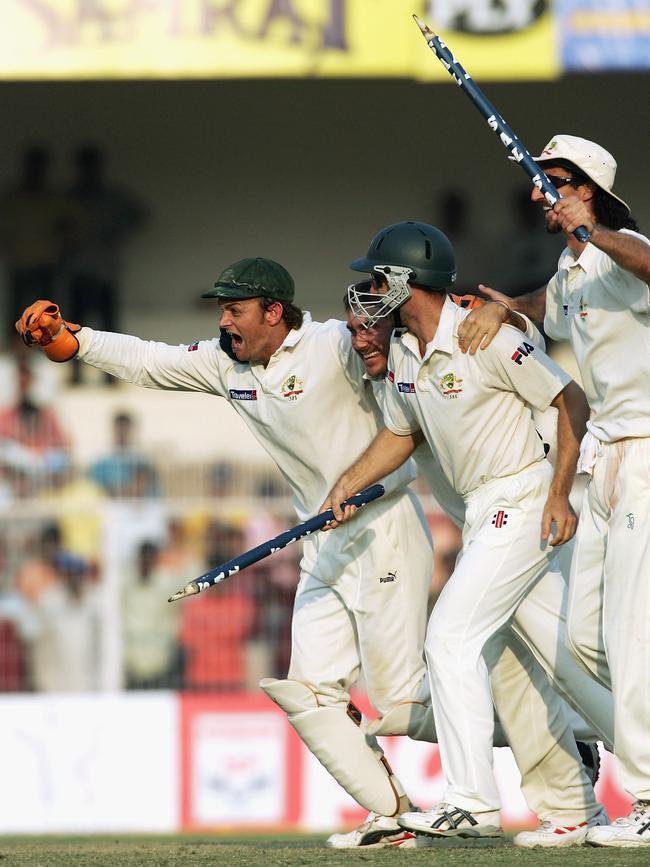
But this was India. The ‘final frontier’ Australia had failed to conquer in the past 35 years. Where even an equally star studded Australia had famously fallen just short on their last visit in 2001.
The loss to injury of captain Ricky Ponting added a further question. But it was one that was to be answered in bravura fashion in the third Test in Nagpur.
Micheal Clarke’s century on debut had set up victory in the opening Test of the series. In the second Australia had escaped with a fortuitous draw when the rains came with the hosts needing just 210 more runs on the final day with all second innings wickets in hand.
That gave the tourists two shots at a series win - still no easy task against a side containing the batting quality Rahul Dravid, VVS Laxman and Sachin Tendulkar and the wily spin of Harbhajan Singh and Anil Kumble - but they only needed one.
Damien Martyn’s 114, and substantial contributions from Darren Lehmann and Clarke saw the visitors post a first innings total of 398. Jason Gillespie then went to work, taking 5-56 in limiting India to just 185 in reply.
Martyn fell three runs short of a second century in the match, with Simon Katich adding 99 to compound the advantage. The first five Indian wickets then fell early and cheaply, and the true nature of Australia’s dominance in the match and the era was accurately reflected in the 342 run win that finally completed an overdue series victory on Indian soil.
3rd Test v South Africa (Cape Town 2014)
Australia won by 245 runs
A century in both innings from David Warner and Micheal Clarke’s unbeaten 161 set the platform for what was ultimately a crushing victory, but in the end it was Ryan Harris’ ability to play through the pain that got Australia over the line.
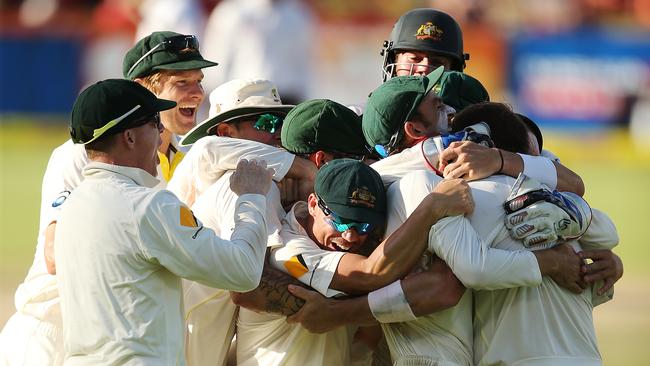
Clarke was left battered and bruised, but unbowed, as South Africa’s fearsome attack leaders Dale Steyn and Morne Morkel worked him over throughout. As ever when these two sides meet there was plenty of needle, with Steyn and Clarke at times needing to be physically separated.
As the final day began South Africa had only the draw in mind. Resuming on 4-71 with the victory total at a nominal 511, the usually explosive AB de Villiers, accompanied by nightwatchman Kyle Abbott, went at less than a run an over for the bulk of the first session, Abbott’s the only wicket to fall before lunch.
But the resistance was broken by a man operating virtually on one leg. Harris, his right knee a mangled, swollen mess of floating bone caused by a series of previous injuries ended de Villiers’ five and a half hour stay at the crease (43 runs off 228 deliveries) before Faf du Plessis was trapped lbw by Steve Smith for 47.
Australia thus needed three wickets to win, but Vernon Philander and JP Duminy saw South Africa to tea, to leave the home side with 33 overs to see out in the final session.
The pair reduced that figure to 20 overs before Duminy was caught at leg slip for 43 off the bowling of Mitchell Johnson, but the drama continued.
Philander was given out caught at short-leg off Johnson. Then reprieved: third umpire, Richard Illingworth ruling Philander’s right hand was off the bat at the time the ball brushed the glove.
The decision angered Clarke, who became entangled in a war of words with Steyn - again - as a drinks break signalled the final hour.
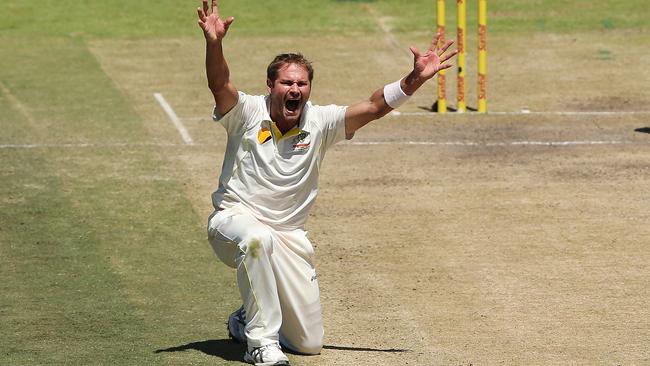
With light fading, enter the limping Harris again, condemning South Africa’s captain Graeme Smith to defeat in his last international match by bowling Dale Steyn and Morne Morkel in the same over, South Africa all out for 265 with just 27 balls remaining.
An emphatic win sealed by a narrow margin.
1st Test v Sri Lanka (Colombo, 1992)
Australia win by 16 runs
A first innings middle order collapse was in part salvaged by some late determination from Ian Healy, but Chandika Hathurusingha’s 4-66 saw Australia post a less than daunting 256, before three Sri Lankan centurions allowed the hosts to declare on 8-547 and with Australia, seemingly, already out of the contest.
Asanka Gurusinha’s 137 proved particularly wearing on Australia, compiled as it was over a mammoth stay at the crease of over seven hours.
But what followed next was ‘the greatest heist since the Great Train Robbery’, according to Allan Border, as Australia rallied, in solid if unspectacular style initially.
No Australian went past three figures but six reached at least 40 (with 58 useful extras donated by the Sir Lankan bowlers, including 34 no-balls), everyone contributing to inch and scrap and fight towards a lead, the hosts set 181 runs to win with 58 overs to play with when Australia’s innings came to an end early on day five.
An opening stand of 76 set the necessary platform, and when Aravinda de Silva was dismissed - taken by a glorious catch by Border off Craig McDermot - they were at 3-127 and still cruising.
Enter Australia’s twin spin threat of Greg Matthews and Shane Warne, the former ripping through the middle order, the later cleaning up the tail. The final seven wickets fell for just 37 runs. None of Sri Lanka’s batsmen outside the top four scored more than six runs as Australia saw out a 16 run win that had looked impossible until the very death rattle of the match.
Australia thus clutched a victory from not just the jaw but throat and upper intestines of defeat, with the definition of an all round team effort, Australia’s slow bowlers spinning their way over the finish line.
4th Test v West Indies (Kingston, 1995)
Australia win by an innings and 53 runs
The two decade long dominance of the West Indies had left scars on Australia. Memories of the home series loss in 1992-93, effectively by a single run when Australia fell narrowly short in Adelaide, still rankled.

But this series had been different. Despite the loss to injury of front line bowlers Damien Fleming and Craig McDermott, the first Test in Bridgetown was emphatically won. Weather saw the second match drawn.
A Trinidad pitch almost perfectly created for the hosts helped level the series, setting up a deciding Test in Jamaica.
Steve Waugh’s refusal to back away from confrontation with Curtly Ambrose in that defeat famously broadcast that this was a touring side not ready to submit.
In stark contrast to Trinidad, Jamaica’s Sabina Park served up a hard clay surface so shinny you could almost see your face in it. West Indies won the toss and at 1-100 at lunch with Richie Richardson working towards a century and Brian Lara set, the match and series were in the hosts’ hands.
But then the fightback began, launched when Warne dismissed Lara for the first time in eight Tests just before lunch. The hosts’ middle order failed to be all out for 265, after losing their final seven wickets for 77.
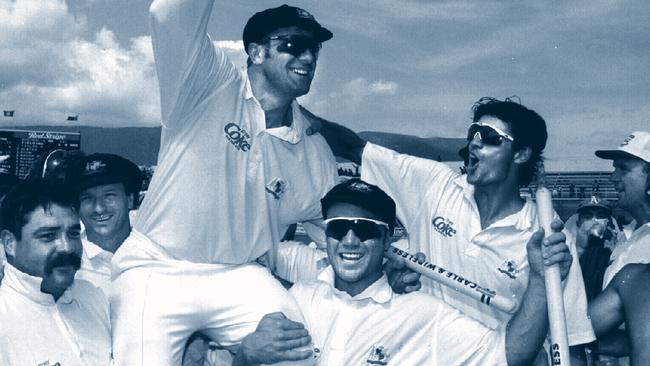
The Waugh twins came together after Australia started their own innings three down for just 73. The 33 Tests in which they had played prior to this match had yielded a single century partnership. Here they were to combine for 231 in a match-winning combination of guts and grace.
Steve Waugh’s reluctance to hook invited bouncers (150 short delivers in the innings by one count), and he wore plenty of them, his body a patchwork of bruises.
The brothers, however, were not just surviving but counter punching, ticking the scoreboard over and wearing out the West Indian bowlers - seven of which were used against them - in the process.
Winston Benjamin was famously reduced to tears on the field when local fans voiced their displeasure at his efforts.
Both Waughs secured their eighth Test century that innings. Steve Waugh was the last man out, dismissed by Benjamin for exactly 200, with Australia all out for 531, a lead of 266.
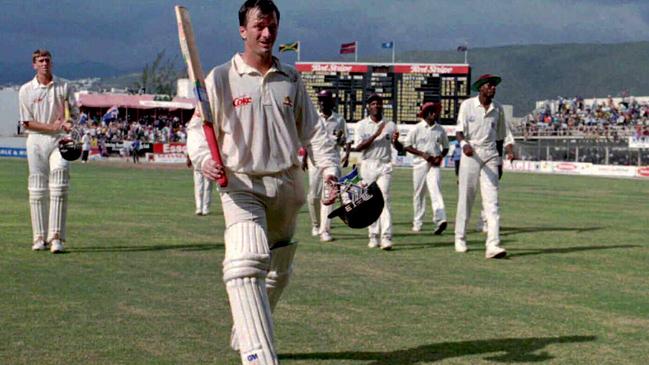
Wisden reported of the epic contest that it was a cricket match “more like arm wrestling, white knuckles tilted back and forth until the strain told, the weaker man snapped.”
Steve Waugh, along with his brother, had simply refused to be the one to yield. The same could not be said of West Indies, succumbing to an innings and 53 runs defeat as Warne cleaned up the tail.
1st Test v England (Edgbaston, 2019)
Australia won by 251 runs
Steve Smith announced his return to Test cricket after the sandpaper affair with what former England captain Micheal Vaughan described as “one of the greatest Test performances in the history of the game” and Steve Waugh described, simply, as “genius”, his century in each innings first saving a match and then winning it.
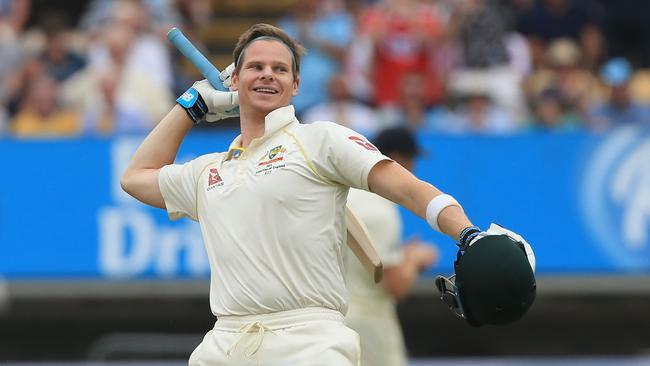
Edgbaston was supposed to be fortress for the English. And looked it in the opening exchanges, Australia 8-122 before Peter Siddle and Nathan Lyon helped Smith more than double that total for the last two wickets.
The English still put on a 90 run first innings lead, before Smith went beyond 140 once again and Matthew Wade posted a century, too, as that deficit was turned in to a 397 run lead.
The hosts entered the final day confident they could escape Birmingham level in the series. But Lyon and Pat Cummins quickly disabused them of that notion.
Lyon finished with 6-49, becoming just the fourth Australian to take 350 Test wickets, while Cummins, who snared his 100th, rattled cages and finished with 4-32, the velvet brutality to complement Lyon’s canny smarts.
Lyon already had six wickets and was on a hat-trick when the injured Jimmy Anderson limped out to the middle mid way through a day that started with home optimism but was now nothing but a death rattle. Lyon was denied his hat-trick but Australia were not made to wait long for victory.

When Cummins got rid of Chris Woakes England had been meekly rolled for just 146. ‘Fortress Edgbaston’ had been reduced to ruins as Australia posted an emphatic win at a ground England had not tasted defeat in for almost two decades.
For all the quality of Australia’s attack, however, the match will forever be remembered as the return of the King, Smith absorbing the boos and cat calls from a rabid English crowd to remind the world what we’d been missing the previous 12 months.
2nd Test v South Africa (Port Elizabeth, 1997)
Australia won by two wickets
It had looked like a good toss to win. Very good. Already one up in a two match series, Mark Taylor didn’t hesitate in putting South Africa in on a Port Elizabeth pitch somewhere between Kermit the Frog and British Racing Car green.
Jason Gillespie’s maiden five-wicket haul validated the decision, though some late Proteas resistance dragged the home side past 200, almost double that which a supremely talented Australia could muster in reply.
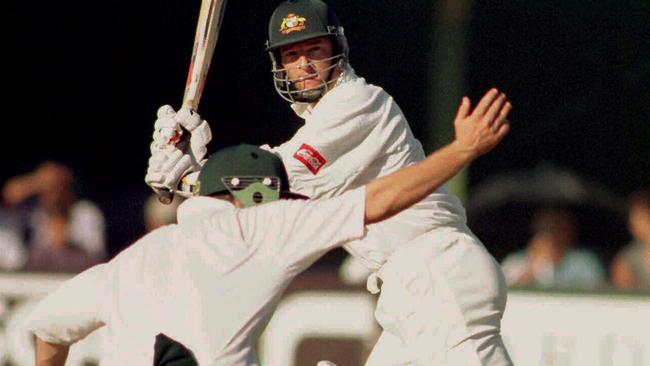
The hosts appeared to have mastered the hazardous batting conditions in stretching out their lead to 188 before a second innings wicket fell. But it was illusionary. The hosts subsequently lost all 10 wickets for little more than 80 after more heat from Gillespie, ably supported by Micheal Bevan.
Australia were thus set 270 to win on a minefield of a deck and South Africa already chilling the celebratory champagne as the first two wickets fell for 30.
Enter Mark Waugh, who by the end of the fourth day had an unbeaten half century to his name and his brother beside him, Australia with half the job done.
The final day’s play, however, started badly for the visitors, as Steve Waugh fell early. There was no need to panic, however.
What followed was an innings for the ages. The marrying of bloody-minded defence and a surgeon’s precision on the attack.
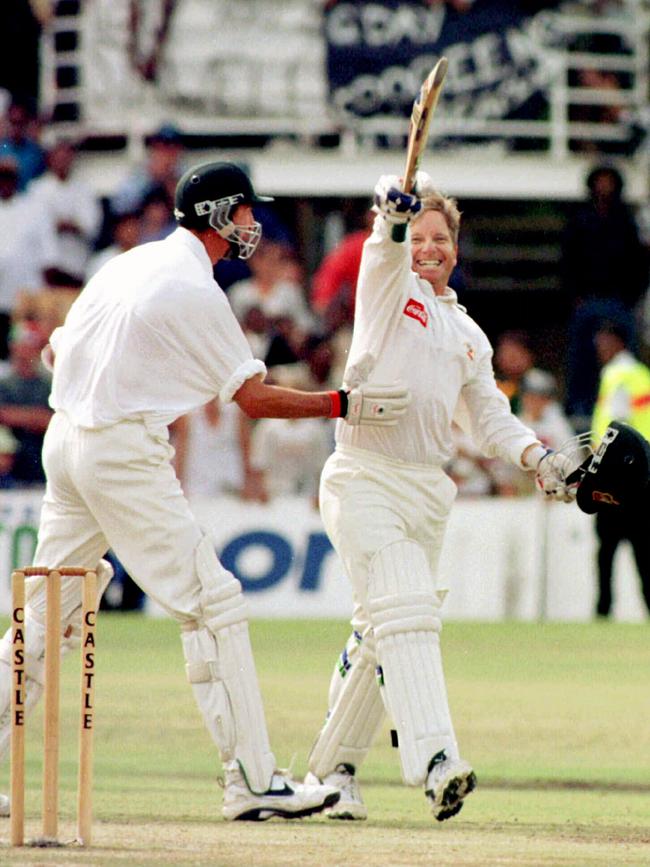
More than 200 deliveries were faced across six hours of the finest exhibition of crisis management you’ll witness on a cricket field, Waugh refusing to yield to the conditions or the fearsome Proteas attack led by Allan Donald and Shaun Pollock.
It was the kind of innings his critics previously claimed he was incapable of playing. One of fierce determined application allied with stroke play of the highest order, in Waugh’s own mind the “best century [he produced] ever at any level, given the circumstances of the match”.
Or, as the pages of Wisden described it, one of “stern defence twinned with innate elegance after he arrived in a crisis.”
Crisis averted, there was still time for a final flourish of drama. Waugh departed for 116 (in a match were only one other, Brian McMillan, went past 50 in either innings), with 12 still needed for victory.
Three wickets were lost before that target had been reached, Ian Healy applying the final touch with an audacious lofted six over long-on to confirm the result.
“It’s undoubtedly the biggest Test win I’ve played in by an absolute mile,” said Taylor in the warm glow of an unlikely win.
“To climb off the canvas like we did was very special. There is no better Australian side I have played in than this one.”
1st Test v India (Pune, 2017)
Australia won by 333 runs
India had not tasted defeat at home since 2012. Australia were coming off the back of nine straight losses in Asia. Few gave the tourists any sort of chance of prospering in conditions they had habitually struggled with.
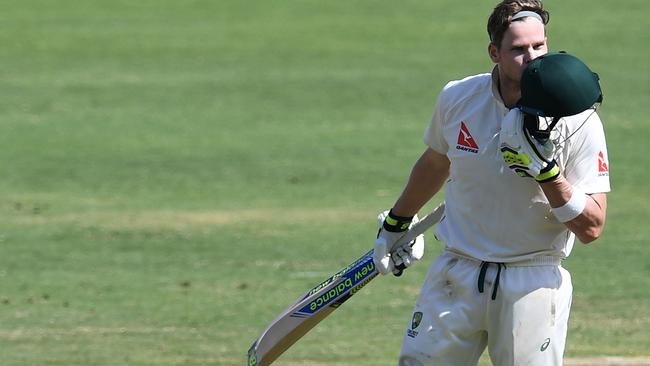
The match was played on a deck so treacherous - Shane Warne said it looked that first morning ‘like a day eight wicket’ - that no one was able to master it. No one, that is, except Australia’s captain.
Steve Smith won the toss. Australia batted first. And well, under the circumstances; David Warner and Matt Renshaw – despite having a case of Deli Belly that saw him leave the field for a spell – set a platform. Mitchell Starc swung the bat late in the day to turn a decent total in to an impressive one. Starc then struck a telling blow to remove Virat Kohli for a duck as the hosts were undone by a minefield of their own design.
Aided by the accommodating pitch, Steve O’Keefe’s ability to turn some and keep others straight bamboozled India, his figures of 12-70 evenly spread across the two innings. For all the unexpected joy O’Keefe’s performance drew, however, the match was ultimately decided by Smith, he alone scoring more in his second innings than India had collectively in either of theirs.
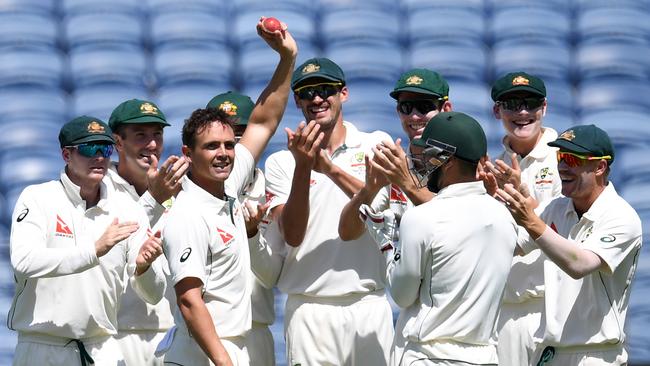
He was given a handful of lives, but on a pitch so unreliable riding luck was always necessary. His 109 was his 18th Test century but undoubtedly one of the hardest fought, the most gutsy and, in terms of setting a tone for what was to be a thrilling if ultimately unsuccessful series for the tourists, one of a true leader.
5th Test v England (The Oval, 1972)
Australia win by 5 wickets
With a 2-1 lead going in to the final match of the series, England had already retained the Ashes. All, then, that was really left to play for was pride.
History will look back on that salvation as the building block towards much greater achievements in the future.
England’s lead had come, in the eyes of the Australians, through a degree of gamesmanship, a Headingley pitch derived of pace and turning square to the host’s advantage. To level the series, then, was cast as a moral victory.
Dennis Lille and Ashley Mallett combined to reduced England to 181-8 after the hosts had won the toss, before Alan Knott dragged them to 284.

In reply Ian and Greg Chappell put on a double century stand, the first ever Ashes match in which brothers both went to three figures, to reach 399. A talented England didn’t fold, and a fourth innings total of 242 was set on a sixth day pitch.
Aided by injuries to John Snow and Ray Illingworth, Australia set about their task with a strong opening platform, but it was ultimately left to Rod Marsh and Paul Sheahan to combine for the final 71 runs needed for victory. From the outside that looked uncertain, from within otherwise.
Marsh describes this match as one of his favourites “because it actually went to plan, the plan was to win”.
Beyond the victory itself, however, and the levelling of the series, was an idea consolidated that this was a collection of players forging in to a team, a team that should - and after this now would - believe in itself. That certainty that victory was theirs to take carried forward with them in a period of success where that core belief became both a trademark and a weapon.
Originally published as 10 of Australia’s greatest ever Test victories away from home, from Nagpur to Newlands and beyond
